This is a diary-ish re-telling of a three-weekend racing binge during which I hoped to visit eight different tracks, six of which would be first-time stops for me. There also was the idea that I could compare/contrast these more grassroots racing venues with NASCAR’s traveling circuits and maybe come up with some useful thoughts.
Weekend Three (This one’s different. The PA Sprint Series is off this weekend – only break all summer – so I’m headed to Virginia for a couple of new tracks, tracks I’d planned to visit earlier in the year but cancelled because the gasoline pipeline hack/blackmail left my being able to get home in doubt. I had to cancel a couple of other activities to do this, but here goes.)
FRIDAY, Ararat Thunder Raceway, Ararat, Va. – This is about as close as you get to where it all started. Ararat Thunder (former Rolling Thunder) is a 3/10-mile red clay track tucked in the mountains, nearly impossible to find if Google Maps gives you bad information. I would have been late for the show, had they not been late starting.
It’s opened and closed three or four times since I first looked at attending, so while I wish the current operators all the luck in the world, I wanted to attend while I could.
This is a track for an area without lots of money. The top two classes – late models and modifieds – run 602 crate engines, an increasingly popular economy choice. The other four classes are more economical than that, and tonight there was an enduro on tap as well.

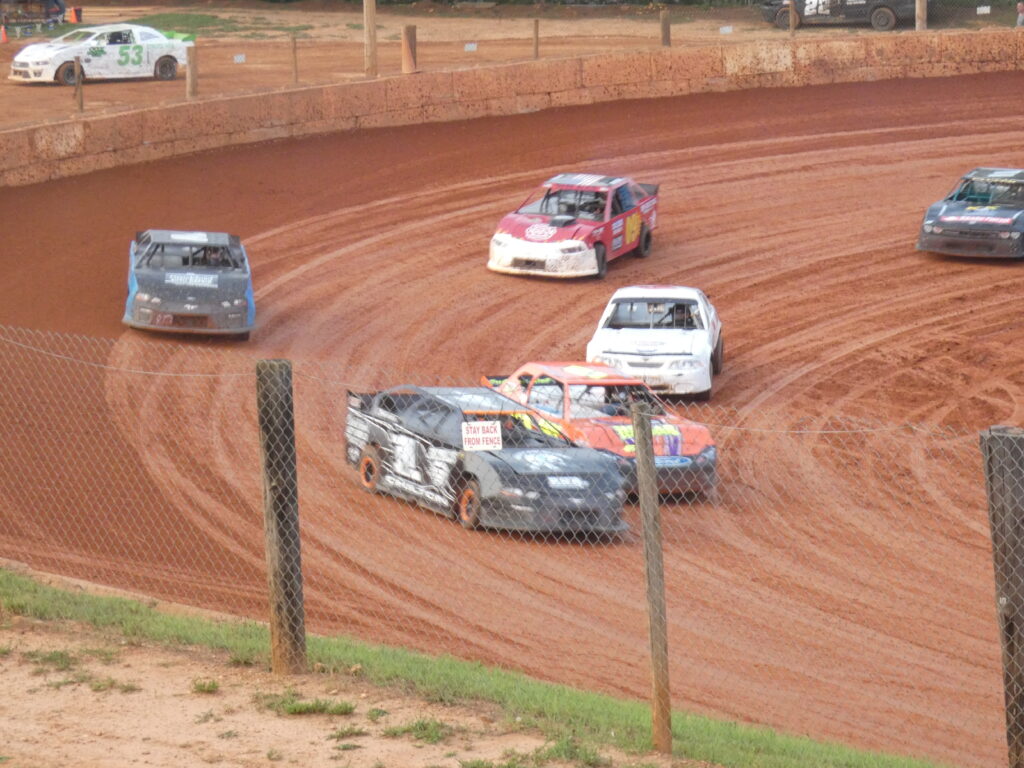
The crowd seemed good, although this is one of those tracks where it’s spread out, with lots of people in lawn chairs or watching from their vehicles, so it was kind of hard to be precise. There are several small sets of bleachers, some aluminum and some wood.
Concessions were fine, although with one window, the lines could get long – a second building just sold snacks and drinks. Unusual was the variety of desserts for sale, including semi-frozen puddings and “cake pops.” The restrooms were modern.
One thing that sped the show along was that there were no victory lane interviews. Instead, drivers were interviewed on video, and those were posted on Facebook. Interesting approach.
The track’s Achilles Heel is car counts. The six regular classes had a total of 37 cars, with a high of eight and low of three (a new division). But it’s a small track, and most of the racing was good. There was very little dust.
When I took out my camera, a young teen next to me asked if I was a photographer. Her mom, it seems was the track photographer, and her dad races a 602 modified – he won his race when the cars ahead of him wrecked each other.
That got me to thinking about my feeling that this place was a real throwback, because one of the areas where it ISN’T an echo of the past is in the large number of women and children in attendance. In that regard, I think, now is much better than then. Also, in the old days, those 37 cars likely would have all raced in the same class, so maybe the issue of seeming fewer cars is a self-inflicted problem. We create countless different classes of race car and then wonder why they can’t all produce full fields.
I almost skipped the program-ending enduro, maybe worried about getting lost on my dark ramble back to the motel, but I’m glad I didn’t. For one thing, eventually 16 cars came out to race. For another, it was a true enduro, where there were no cautions and cars that stopped on the track just stayed there.
It also was interesting. The guy who sort-of painted his car like a police car (and wrote “Police” on the side, just in case you didn’t notice) kept his police lights flashing even when his transmission started giving out, and he began to make more noise than forward progress.
The leader seemed to have things well in hand until – I’m pretty sure this is what happened, but the race wasn’t announced – he lapped the second-place car, who immediately sped up and spun him out. That led to some confusion as to who had won, and it might also have led to an apparently sizeable fight in the pits; from the noise, many of the combatants seemed to be female. It didn’t look like any of this was going to be explained, so I left, not an easy task in a rocky, every-car-for-itself parking area. Fortunately, I made it back to the motel without spending hours wandering the back roads of Southwestern Virginia.
I have to be honest. If we can only have one form of racing survive, I’d rather it be Ararat Thunder Raceway and its counterparts than NASCAR. It’s more affordable, more family-oriented, and more fun, at least for me. As I noted with go-karts, it’s certainly threatened by the demise of the car culture, but its affordability and its availability as a family activity at least give it a chance.
That’s my takeaway – along with the one that says doublecheck your directions before you head to a track located so far from any place you’re ever even thought of going.
SATURDAY, Motor Mile Speedway, Radford, Va. – The last stop on my tour was the one most like the NASCAR world. Motor Mile is a paved half-mile with very impressive facilities (there’s also a drag strip and a pay-to-ride go-kart track affiliated with Rusty Wallace, who also does a “driving experience” deal here). The main grandstand is huge, and there are several sizeable bleacher units on the backstretch with weeds peeking through the rows, probably not needed since the days this track hosted what’s now the Xfinity Series.
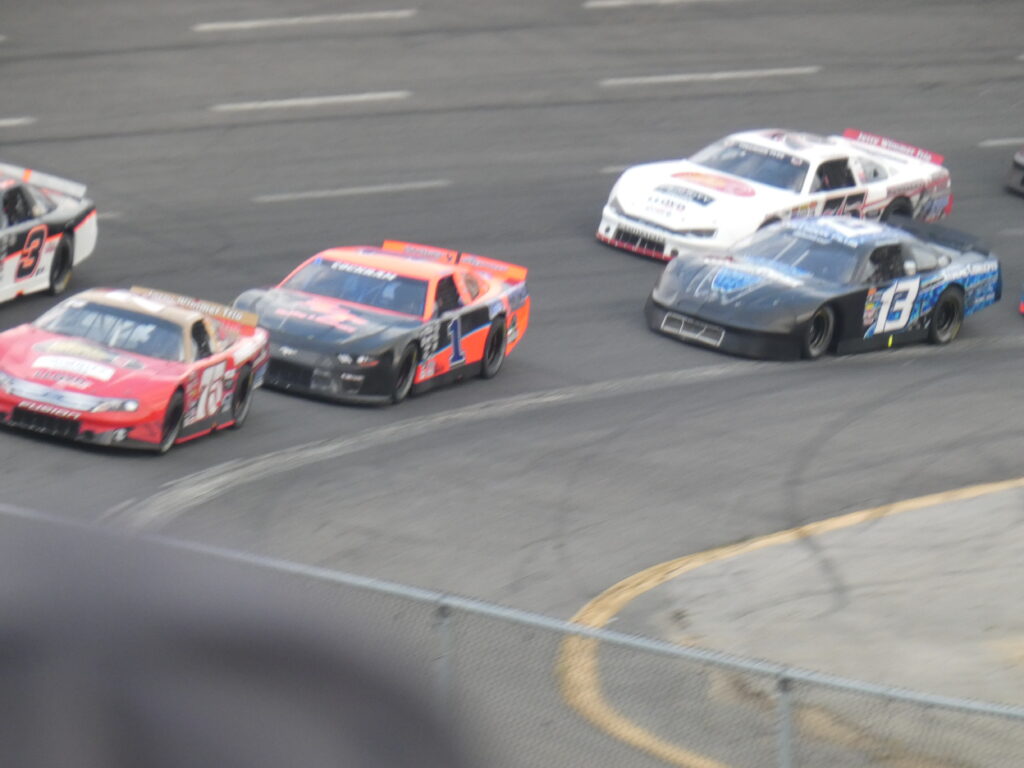
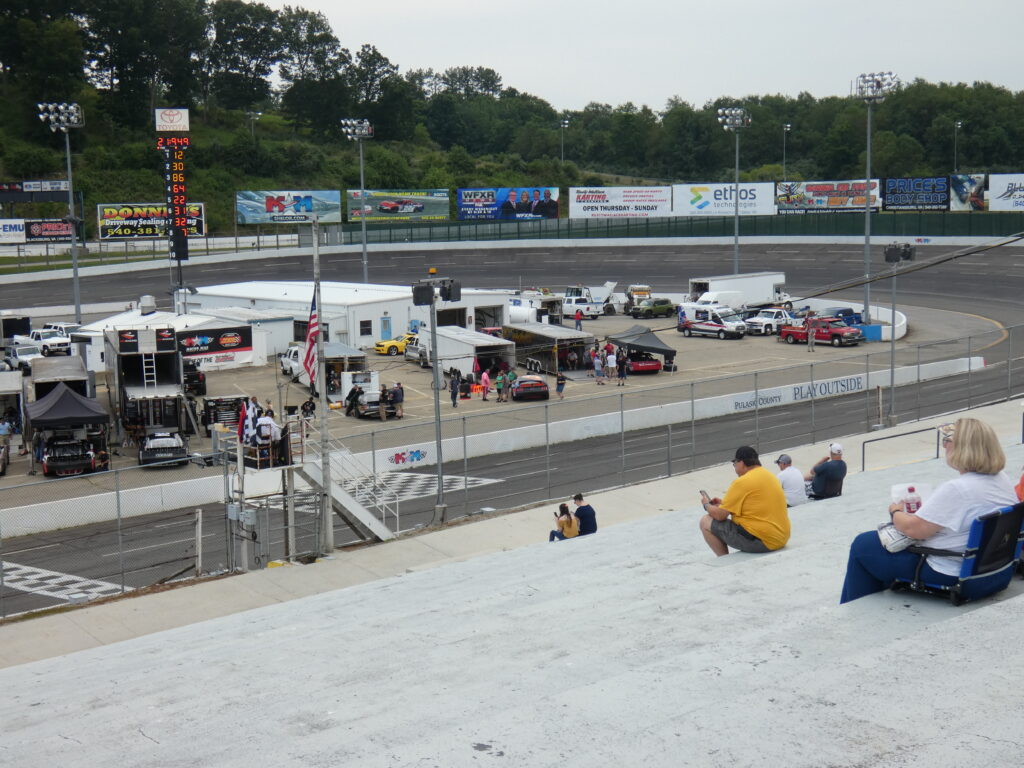
For the second straight night, car counts weren’t a bragging point. Most divisions had fields in the mid-teens, although there were only 11 of the headlining late model stock cars, which were running twin 60-lap features.
Once again there was a threat of rain, even though forecasts had it not starting until after the races should have ended. Indeed, there was a tiny sprinkle early and a slightly more substantial one during the second late model stock feature (the next-to-last race), but the show was completed. The crowd seemed pretty good, although the size of the grandstand meant there were lots of empty seats. For all the racing going on, admission was surprisingly cheap.
Even with the modest fields and minimal handicapping, the racing was good, quite entertaining. The track held practice and time-trial qualifying in the afternoon up until just before the show officially started at 7:00 p.m., so the “show” was features only. Passing generally was a multi-lap endeavor, but there was enough of it to keep everyone’s attention.
My only real complaint about Motor Mile was that the pace of activity seemed too leisurely. Lots of laps were spent circling the track before green flags and after cautions, and instead of Ararat Thunder and its lack of victory lane interviews, here the top three finishers in each race were interviewed – given that there were nine or ten feature races, that’s a lot of interviews (and a lot of cardio exercise for the announcer).
My takeaway here was financial. Motor Mile is in a growing area, so eventually there will be other possible uses for the property, at least in theory. That means the track is doing the right thing in developing multiple income streams. The weekend after my visit, both drag strip and oval were running, and the drag strip publicity noted that fans could see the oval racing from their seats at the strip, and they could walk over to the kart track and ride a kart for half price – nice incentives there.
The kart track, of course, is yet another income stream, and there are “driving experience” opportunities at both the oval and the drag strip.
Group attendance seems to be encouraged. One group was there when I attended, and representatives were introduced during pre-race ceremonies, one of whom did the opening prayer, and another announced, “Gentlemen, start your engines.” Nice touches.
THE WRAP-UP – What did Frank learn?
First of all, I learned that, after all that driving, nights in motels, fast food, etc., I was ready for a weekend off. Beyond that, here are some thoughts.
The tracks: Everywhere I went, it seemed as thought the crowd turnouts were good; weekly short-track racing seemed to be holding its own, at least at these venues. I’m happy for all of them. I liked that there were so many families in attendance. That seems hopeful for the future. Also, the tracks seemed reasonably well maintained.
While car counts were a concern for both of the Virginia tracks, the good news for fans were that their admission charges were lower in general (Path Valley and Seven Stars excepted) than their Pennsylvania counterparts.
Most of the tracks were doing more than just opening the doors, running the races, and sending everybody home. They were trying to entertain. That’s good.
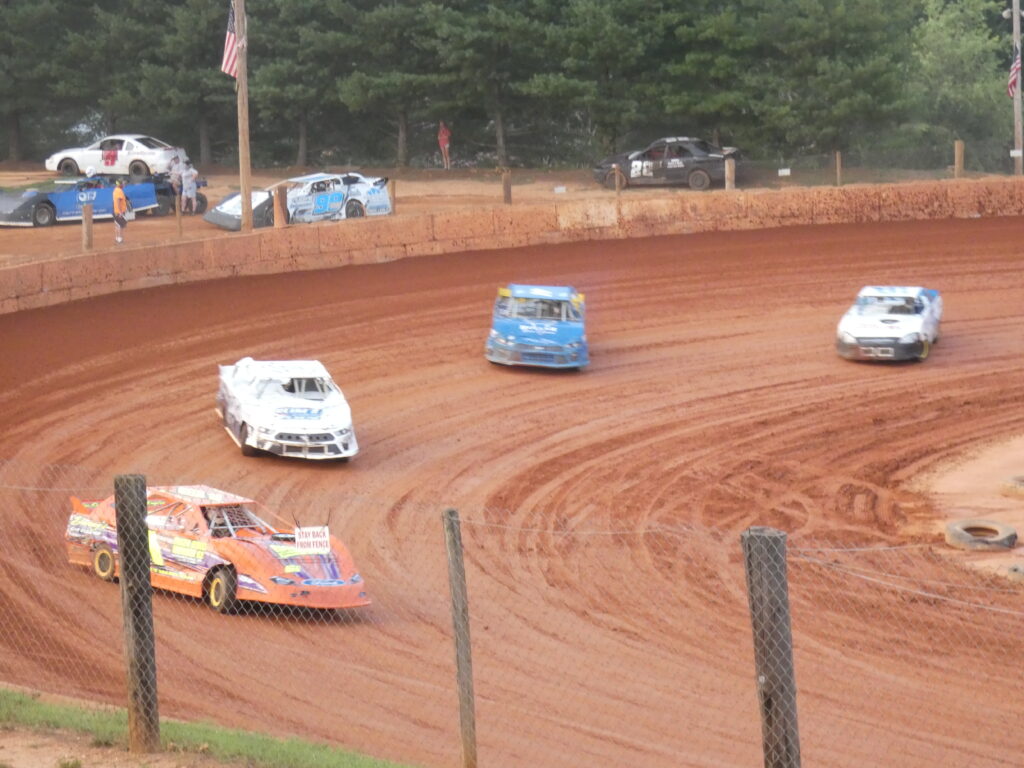
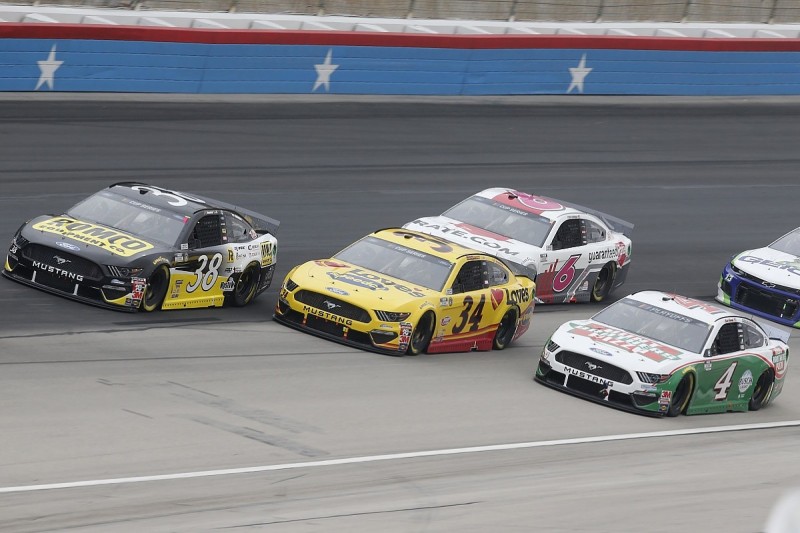
The Big Picture: It’s all about money. One NASCAR race is worth more – in admissions, purse, sponsorship, facilities, etc. – than all eight of these tracks combined. That affects the fan in what it costs to be a fan, so the question is whether, in the future, that many people will have the disposable income available to be high-involvement NASCAR fans. As long as local tracks keep costs relatively consistent with going to a movie, their potential audience will be bigger.
That brings up another issue: Will physical attendance remain the primary way to be a fan? A lot of local tracks shifted some attention to pay-per-view streaming last year when COVID complicated life. Will younger fans accept that as a favorable alternative to attending the races in person? If so, it could be an advantage for the small tracks, because NASCAR fans still consider watching races on TV to be something you do for free (or for your cable/satellite bill). Some people think the next round of NASCAR TV contracts will begin the shift to pay-per-view. The local tracks already have some experience there and maybe have enjoyed some success; NASCAR is in unknown territory.
One more economic difference. At a big NASCAR race, proclaiming “Drivers, start your engines” is a privilege limited to corporate executives of big sponsors, not members of groups attending the race. Some local tracks have VIP suites and special seating, but it plays far less of a role than in NASCAR. Decades ago, an official of one major event (not a race) called the everyday fans in attendance “the raggedy-assed masses,” and I think NASCAR has to be careful not to appear to cater only to the VIP crowd. This isn’t so much of a problem at a Friday/Saturday night track. Good for them.
The bigger question, going beyond NASCAR, is whether big-time sports (and the concentrated television money that supports them) as we know it will survive societal changes that might bring new norms to leisure life. I won’t be around to learn the answer, but I can’t help but feel that, if motorized competition survives at all, it has just as much chance of surviving in Ararat and Seven Stars and Spring Run as it has in Daytona, Charlotte and Indianapolis.

About our cover photo – This is John Walp from Wapwallopen, Pennsylvania. He’s a regular IMCA/RaceSaver sprint competitor with the PA Sprint Series and occasionally other nearby RaceSaver groups. When PASS and the Mid-Atlantic Sprint Series recently raced at Bloomsburg Fairgrounds Raceway, John volunteered to take his car to Marley’s Brewery & Grille across town to join a ULMS super late model team for a promotional appearance. He does this quite often. The next weekend, Nick Sweigart did the same thing at Port Royal Speedway before the races there. Kids were allowed to “autograph” the race cars and sit in the seats, and the drivers talked with all visitors. These activities help keep racing alive and thriving. Cup drivers used to do these appearances before the demands on their time and the numbers of people involved made it difficult, but at the grassroots level, it’s common. There’s a distance between driver and fan at the national level that – thankfully – doesn’t exist locally, thanks to John, Nick, their teams, and the tracks that help set up the events. The sport needs them.
Frank Buhrman
(Photo credits: All photos by Frank Buhrman except for the NASCAR Cup shot, which is from Autosport.)



Frank, this was absolutely great reading. Thank you. It seems like Ararat Thunder Raceway is a great place and I would love to see a race there, but way too far away across the country and I can’t travel too much these days. Can’t walk up bleacher steps too well either.
I am really glad you did this series and I know from experience, even if people do not comment, they do read, and that is a good thing.
Keep up the good work & thanks again
Frank,
Enjoyed your adventure. What a variety of facilities and racing types. Was interesting to read your comparisons and contrasts of them as well as the crowds in attendance and the challenges the locations face. Great cross-section.
With so much focus on the top three touring series it’s easy to get sucked into thinking that’s all there is to motor sports. .It’s a great reminder that there is more… we only have to get out there, find it and enjoy it.
So glad you did.
Thanks for sharing it with us.
Well done!
The big challenge likely will always be money. Last Saturday I went to Larry King Law’s Langley Speedway in Hampton, Va., a track that was part of my regular rotation 50 years ago. Very nice facility, but a four-division show drew only 41 cars total. I think we need more inspired thinking about how to keep things affordable for those people who remain hooked to fast cars.
My takeaway from Langley was that all the officials were wearing helmets, a safety precaution I’d not seen before, and I wondered if the track’s naming sponsor being an injury law firm had any bearing on that.